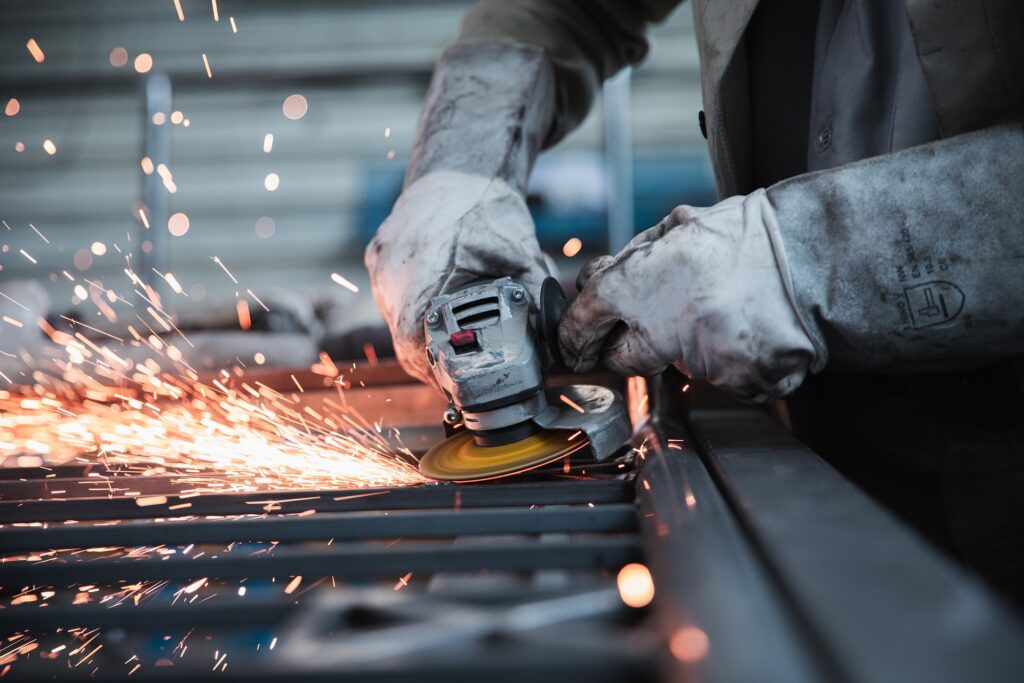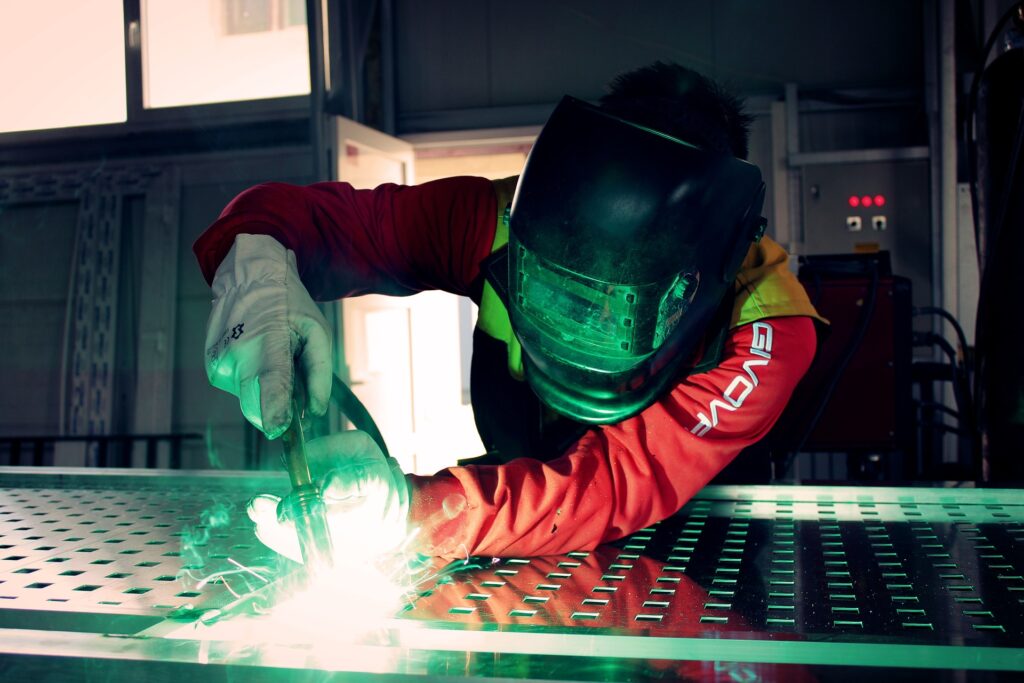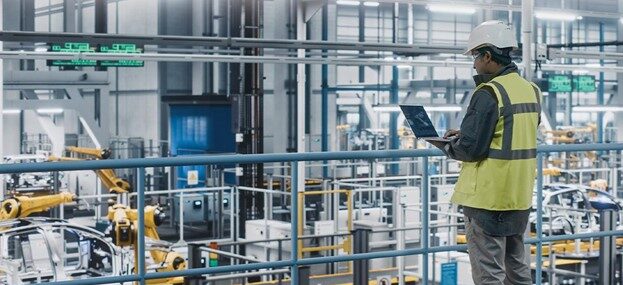For Egypt, a vital part of achieving sustainable economic growth is increasing manufacturing and exports while reducing imports. “Localizing industry and expanding production is the path to development and job-rich economic growth,” Finance Minister Mohamed Maait stressed in June.
Egypt already has a solid manufacturing base compared to other African nations. “Egypt is Africa’s top manufacturer by value-added,” according to a 2022 OECD report. In 2019, the country accounted for 22% of Africa’s manufacturing value added. That helped Egypt’s economy become the second biggest on the continent, just after Nigeria and ahead of South Africa, according to the IMF.
However, the country needs more manufacturing investment fast to reduce its dependence on imports, ultimately taking pressure off the pound. The currency has lost half its value against the dollar since February 2022, with experts expecting more devaluations.
To boost manufacturing investment, the government has announced several general and industry-specific programs, policies and strategies. “The state [is] keen on providing various facilities and incentives that would support and enhance the role of the industrial sector,” Prime Minister Mostafa Madbouly said during a February meeting.
Incumbent positives
The OECD report highlighted “key assets” that foster industrialization, starting with Egypt’s young population and rapidly growing economy.
Other strengths are Egypt’s location and the Suez Canal, which the OECD says saw 10% of global freight trade pass through in 2020. The country also would make an ideal export hub for developed and emerging markets.
The OECD pointed to the government’s “key role in sustaining industrialization” since the 1950s and 1960s, when it implemented an “import substitution industrialization strategy.” “Many of the industries that exist today in Egypt originated during this period,” said the report.
According to the OECD, manufacturing accounts for 16% of GDP. Companies are mainly “low-to-medium-technology industries,” representing about half of domestic manufacturing’s value added.

Industrialization efforts
The plan to localize manufacturing starts with an “import substitution strategy,” announced a year ago. According to the Ministry of Trade and Industry, sectors benefiting most include wood and furniture, medical and healthcare, food and agriculture, textiles, printing and packaging, chemicals, construction, and engineering products.
Supporting the ministry’s efforts is its National Industrial Localization Program, implemented by the Industrial Modernization Center.
In June, the government amended customs laws, lowering duties on imported raw and semi-finished goods that manufacturers use to produce products for export. The modifications also give bigger breaks for using more local components.
Other government efforts include a “Golden License” that allows investors to buy or rent land and operate projects without having to secure prior approval from government bodies, state-owned Al Ahram reported in December.
Private sector manufacturers have two options to become eligible for the license. The first is partnering with a state-owned (public sector) company or “any entity affiliated with the state.” Alternatively, they can prove their products “contribute to sustainable development in line with the state’s economic development plan,” said Al Ahram.
The publication said the Golden License would help the state exit several economic sectors and “set up a framework for regulating the relationship between the government and private sector.”
In April 2022, President Abdel Fattah el-Sisi announced the National Initiative for Industry (Ebda) to support new industrial investments. Mina William, the initiative’s executive director, told Ahram in January the aim is to encourage local and private-sector manufacturers to invest in Egypt.
The OECD report said those efforts are in tandem with major investment-related legislation: the Law of Investment Guarantees and Incentives No. 72/2017; Micro, Small and Medium Enterprise (MSME) Law No. 152/2020; and MCIT Decree no. 361/2020, as well as amendments to the executive regulations of the E-Signature Law.

Sector-specific programs
The automotive sector has been in the spotlight since 2016, with the government drafting several versions of its strategy giving assemblers tax and non-tax incentives. Parliament approved it in June, calling it “The National Strategy of Localizing the Automotive Industry (NSLAI).”
The strategy’s official document said tariffs on imported parts going to car factories would decrease from as much as 40% to a flat 2%. Eligible parts include electric motors, batteries, control units and electric-bus ventilation systems. Those customs reductions also cover electric vehicle charging stations and natural gas fueling stations. The government also will impose a 2% tariff on imported natural-gas cars, down from 30% pre-NSLAI.
The automotive strategy also includes the Egyptian Automotive Industry Development Program (AIDP). In March 2022, Cabinet spokesman Nader Saad told Al Ahram the AIDP’s mandate is to construct the framework necessary to further develop existing car assembly and manufacturing capabilities and encourage new investment.
Furthermore, the government established entities to promote automotive manufacturing, with the Supreme Council for Vehicle Manufacturing headed by the prime minister. It aims to create a more automotive investor-friendly environment by drafting policies, strategies, regulations, and legislation. The government also introduced a fund that only finances projects that manufacture electric vehicles and natural gas-powered cars.
The government also is looking to develop electronics manufacturing. The Ministry of Communication and Information Technology announced the Egypt Makes Electronics (EME) initiative in 2015. The ministry described the program as a main contributor to the government’s plan to “double exports, reduce imports of electronic and electrical appliances, and provide jobs.”
It comprises six main incentives ranging from 50% to 100% discounts on specific aspects of electronics manufacturing projects. The list includes office space, R&D, enterprise training, manufacturing electronic design tools and development kits, graduate training, and customs on factory tools and equipment. So far, several smartphone makers have capitalized on EME: Sico in 2017; Vivo in 2021; and Nokia, Samsung, Oppo, and Infinix in 2022.
Next should be localizing the pharmaceutical industry, which came into the limelight during the COVID-19 pandemic. At a 2021 meeting, Madbouly said it was “among the priorities for national security.”







